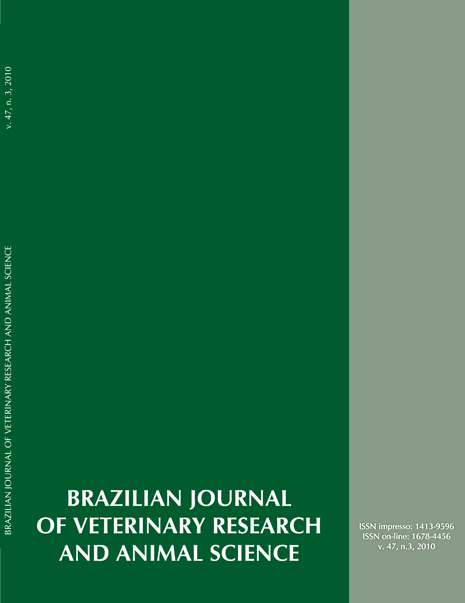Study of the arterial vascularization in capibara hearts (Hydrochaeris hydrochaeris - Carleton, M. D. 1984)
DOI:
https://doi.org/10.11606/issn.1678-4456.bjvras.2010.26856Keywords:
Conary artery, Heart, CapybaraAbstract
The present study used thirty randomly selected capybara (Hydrochaeris hydrochaeris) hearts, among males and females with different ages with no sex or age selection, gently donated by Empresa Pró-Fauna, city of Iguape, in São Paulo State. With IBAMA register number 235930848-0 and SIF register number 3381. Catheters were put into the right and left coronary arteries and a latex substance stained with a specific pigment was injected into them. We found in 96.9% of the hearts studied that the right and left coronary arteries had origin from the ascending aorta artery. In 3.3% of the hearts studied the right coronary artery wasn't present, but only the paraconal interventricular and circumflex branches. The intermediary branch had originated from the paraconal interventricular branch in 40% of the heart samples, or could have its origin directly from the ascendant aortic artery in 3.3% of the hearts samples; and finally could have originated from the circumflex branch in 56.6% of the heart samples. The right coronary artery had smaller caliber than the left coronary artery in all the samples / 100% of the heart samples. It went through the coronary channel with branches being emitted to the right ventricular edge. In the atrial face side this artery had anastomotic branch in all the samples, as previously described.Downloads
Download data is not yet available.
Downloads
Published
2010-06-01
Issue
Section
UNDEFINIED
License
The journal content is authorized under the Creative Commons BY-NC-SA license (summary of the license: https://
How to Cite
1.
Tenani SC, Melo APF de, Rodrigues RF. Study of the arterial vascularization in capibara hearts (Hydrochaeris hydrochaeris - Carleton, M. D. 1984). Braz. J. Vet. Res. Anim. Sci. [Internet]. 2010 Jun. 1 [cited 2026 Jan. 5];47(3):203-7. Available from: https://revistas.usp.br/bjvras/article/view/26856





